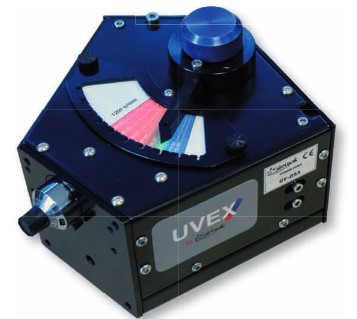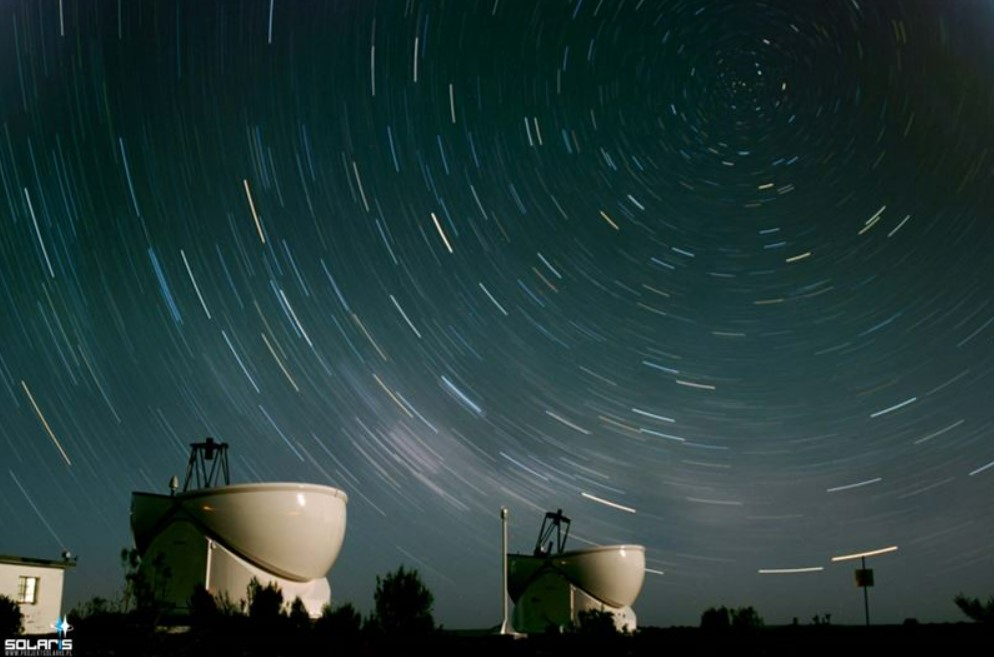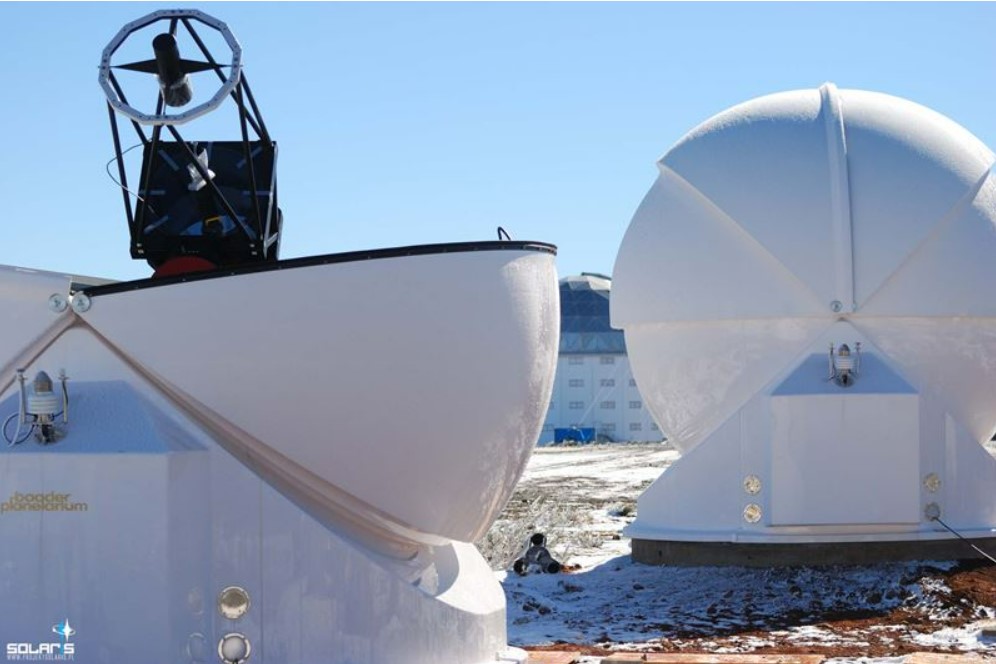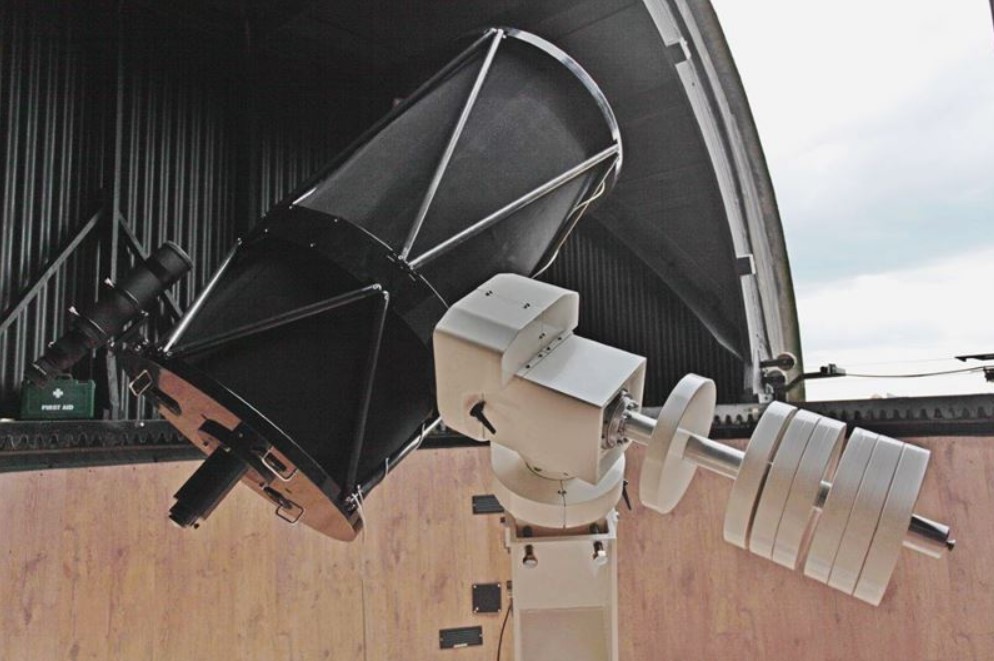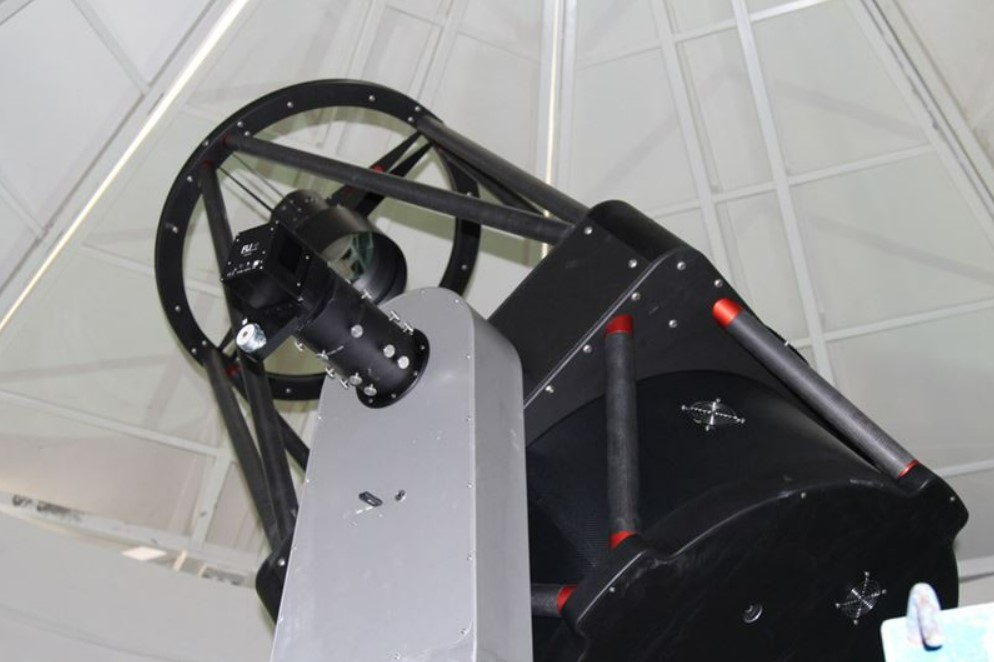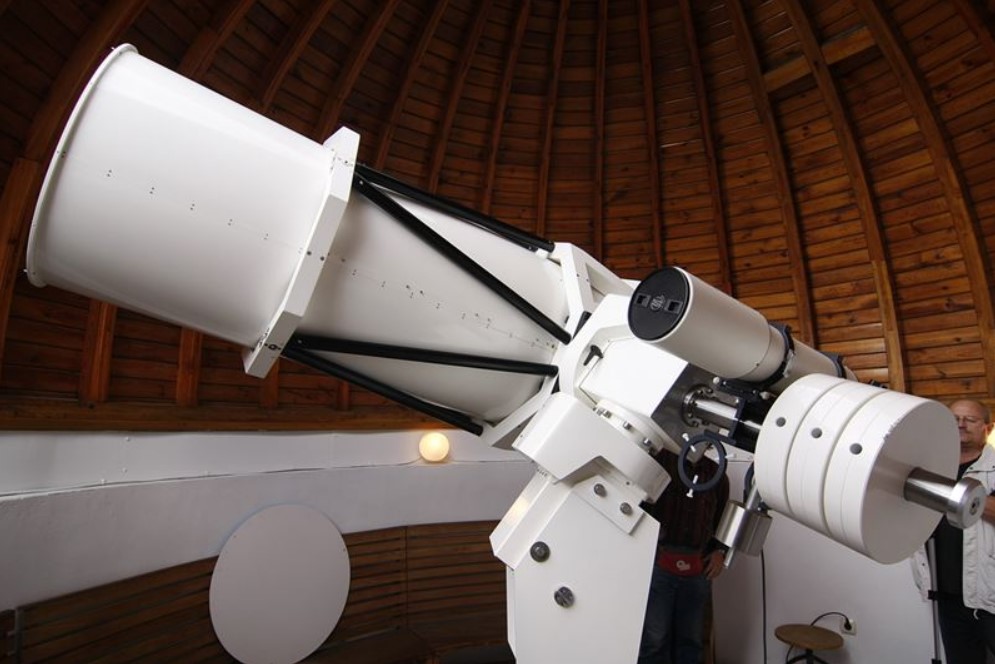|
Astronomical spectroscopy
|
The key questions⇒Spectro with a slit… or not? Main spectroscope parameters⇒Spectral resolution power (R) --------------------------------------------------------------------------------------------------------- Shelyak Instruments was created in 2006 to design and distribute scientific and educational instruments, as well as accompanying services. The company’s primary objective is to develop spectrography in the world of astronomy, for both amateurs and professionals. |
|
About Shelyak
Shelyak Instruments was created in 2006 to design and distribute scientific and educational instruments, as well as accompanying services. The company’s primary objective is to develop spectrography in the world of astronomy, for both amateurs and professionals.
Shelyak is the name of the second brightest star in the Lyra constellation: beta Lyrae. Of ancient Arabic origin, Shelyak means “turtle”. The origin goes back to mythology. Mercury was resting on the banks of the Nile when he saw an empty turtle shell. He noticed the lovely sound that came out when he struck it, and so he had the idea of attaching strings to the turtle shell, creating the first musical instrument: a lyre!
But beta Lyrae is also a fascinating star. Its brightness varies over a dozen days, a phenomenon clearly visible to the naked eye. More importantly, its spectrum features numerous emission lines. Beta Lyrae is in fact a double star, with one star filling its Roche lobe and the other star being a Be: it is surrounded by a large ring of matter and has bipolar jets…
Shelyak is a special star for us, as it was one of the subjects of our studies. It’s quite natural that we decided to name the company Shelyak Instruments.
Remote Spectroscopy – the UVEX Motor Unit
The UVEX is the most versatile instrument in the range. Achromatic by design, it can explore far into the ultraviolet and infrared – at the very limits of what today’s cameras can achieve. The interchangeable gratings (in option) allow different resolutions. Combined with its motorization module, it can be operated remotely.
The motorized UVEX is the ultimate version of the UVEX, allowing remote operation. You can remotely control the central wavelength (grating angle) and adjust the spectroscope’s focus.
The motorization integrates the control of the calibration module (equivalent to the SPOX module). So it’s easy to do your dark, flats and calibration images remotely.
The key questions
Spectro with a slit… or not?
The first task of a spectroscope is to disperse (spread) light according to wavelength, so as to see variations in intensity as a function of wavelength. To achieve this, the size of the light source must be very small. In astronomy, we are fortunate in that the stars are indeed “quasi-point-like”, due to their distance. The image of a star at telescope focus can therefore be used as a point source. In practice, we often prefer to use a very narrow slit at the entrance to the spectroscope. But both approaches – with or without a slit – have their advantages.
Advantages of a slitless spectro
A slitless spectro has two advantages:
- It’s particularly simple
- It is very efficient, since all the starlight enters the spectroscope.
In a slitless spectro, it’s the size of the image of the star at the telescope’s focus that determines the instrument’s resolution. You therefore need to pay particular attention to focusing, star tracking and anything else that might “spread” the star’s image. We’re therefore dependent on the turbulence of the sky (seeing), the wind, and so on.
Advantages of a slit spectroscope
The vast majority of spectroscopes used in astronomy have a slit at the entrance to the instrument. In this case, it’s the slit that gives the instrument its resolution. This enables :
- guarantee constant resolution, whatever the observation conditions (seeing, wind, tracking quality),
- observe an extended source: nebula, galaxy, etc,
- make the position of the spectrum in the image independent of the position of the star (provided the star is in the slit),
- wavelength calibration with a calibration lamp (which is always an extended source),
- achieve higher resolution (at the cost of losing some of the light in the slit),
- isolate the star you wish to observe, without the risk of overlapping spectra,
- significantly reduce the level of background light,
- de mesurer, en même temps que le spectre de l’étoile, celui du fond de ciel, pour corriger notre spectre de la pollution lumineuse.
measure the spectrum of the background sky at the same time as the star, to correct our spectrum for light pollution.
The only slitless spectro in the Shelyak Instruments range is the Star Analyser. All the others have a slit… and often several, to adapt the size of the slit to the focal length of the telescope.
Main spectroscope parameters
Spectral resolution power (R)
The resolution (Δλ) of a spectroscope corresponds to the smallest observable details in the spectrum. It’s a quantity expressed in wavelengths (either nanometers or angstroms; 1 nm = 10 Å). Usually, we use Resolution Power (R) instead, which is a dimensionless quantity defined at a given wavelength (λ). In astronomical applications, the Power of Resolution is often given around the Hα line, at 656.3 nm, and is calculated as follows:
R = λ / Δλ
A spectroscope is generally considered to offer low resolution below R = 1000, and high resolution above R = 8000 (these values can vary greatly depending on the context in which you’re working – the figures given here correspond to the amateur environment).
A low-resolution instrument covers a wide range of wavelengths (e.g. the entire visible range), and enables faint objects to be observed; for a given magnitude, exposure times are significantly shorter in low-resolution.
Conversely, a high-resolution instrument will enable us to observe – for example – minute details in the profile of a spectral line, but at the cost of a smaller field of view, and a significantly longer exposure time. Over a full night of observations, you’ll see far fewer objects.
As a general rule, all Doppler shift measurements are almost exclusively high-resolution (only objects with very high radial velocities, such as quasars, are accessible at low resolution).
Slit size
The spectroscope entrance slit is the interface between the telescope and the spectroscope. This slit is (almost) always the object of an essential trade-off: on the one hand, you want to widen it to collect as many photons as possible, and on the other, you want to close it to increase resolution (the slit has a direct effect on the instrument’s resolution).
Ideally, the size of the slit should correspond to the size of the image of a star at the focus of the telescope. This depends on two parameters: the telescope’s focal length and the sky’s seeing at your observation site (seeing characterizes the sky’s turbulence). If you don’t know the seeing of your sky, or if you’re observing in an “ordinary” site, consider a seing of 3″ (arcseconds). In the best observation sites, seeing can be as low as one arcsecond.
The size (T in µm) of the image of the star at the focus of the telescope of focal length F (in mm) for seeing s (in arcseconds) is calculated by the following formula:
T = F . s . π . 1000 / (3600 . 180) = F . 0,00485
For a given telescope and site, we recommend using a slit at least as large as this value.
An example: in the case of an amateur telescope with a focal length of 2 metres and a good observation site (seeing 2.5″), the slit size will be of the order of 25µm (2000 x 2.5 x 0.00485 = 24.25).
The above calculation can only be made if you know the telescope you will be using. If not, you can also use the slot size to estimate the telescope’s maximum diameter.
Aperture (F-ratio)
A telescope (or refractor) is defined by its focal length and diameter, and the ratio between these two values (F-ratio) is often given as its “aperture”. The more open a telescope is, the brighter it is (and the more expensive it generally is, because it’s optically complex to make an open instrument).
A spectroscope also has the same aperture parameter, which indicates its ability to handle a more or less open input light beam.
We will always try to match the aperture of the spectroscope to that of the telescope; for example, if a telescope is F/8, prefer a spectroscope also at F/8. If we deviate from this ideal adjustment, the instrument will function correctly (it will produce quality spectra), but at the cost of a loss of efficiency, either in light (we lose photons) or in resolution (we could do better).
Other parameters
Beyond these three main parameters, there are a few others to consider when choosing your instrumentation. For example, we need to consider mechanical adaptation (draw-in, adapter rings), or sensor sampling. At this stage, however, these can be considered secondary elements. For further details, we recommend reading the “Succesfully Starting in Astronomical Spectroscopy – A Practical Guide”.
Which telescope to choose?
I already have a telescope
If you already have a telescope, it can advise you on the type of spectroscope to install.
1. You can then make a quick calculation of the optimum slot size (see previous paragraph). To put it simply, below 500mm in diameter, we consider ourselves to be in the “small telescope” range, which corresponds to most of Shelyak’s instruments.
200 – 300 mm telescope: Initiation range
2. If the diameter of your telescope is greater than 500mm, it’s useful to make slightly more precise calculations. Depending on your objectives, you’ll certainly have to choose between higher resolution (even if it means losing a little light), or limiting magnitude (at the cost of lower resolution).
Up to 500 mm diameter: Performance range

3. Above this diameter (> 500mm), consider a fiber-optic spectroscope, such as the eShel, or even the Whoppshel. Since, for a given resolution, the size of the spectroscope is proportional to that of the telescope, we quickly arrive at instruments that are bulky and heavy, and therefore subject to mechanical bending. Using an optical fiber between the telescope and the spectroscope separates these two elements, and keeps the spectro stable on a table. The optical fiber is typically 50μm in diameter (compared with most slits closer to 25μm), which is well suited to telescopes of 500mm and above. In the case of the Whoppshel, the fiber can even go up to 105μm in diameter (and thus telescopes in the 1m class and beyond)
Over 500 mm in diameter: eShel & Whoppshel
.
I don’t have a telescope
1- Use a mirror telescope for spectroscopy. By design, these telescopes are purely achromatic, meaning they behave exactly the same at all wavelengths. These are the instruments that will best enable you to explore extreme wavelengths (UV and IR). There are currently two types of instrument on the market: Newton telescopes and Ritchey-Chrétien (RC) telescopes.
2 -To observe faint objects (low resolution), prefer an “open” telescope, i.e. with an F/D ratio of less than 5 (this is the case with Newtons, for example). Conversely, for high resolution, prefer a more closed telescope (F/8 or higher – RCs are generally at F/8).
High resolution: bright targets
If you’re interested in radial velocity measurements, or measurements that require you to observe details in a line profile (in emission or absorption), then you need to go for high resolution. Either the spectroscopes : UVEX, LHIRES III and eShel
 |
|
|
Versatility (for experienced observers) :
If you have several answers to this same question, because you’re aiming for several types of observations (some high-resolution, some low-resolution), then you should go for a versatile instrument, like the UVEX.
There’s clearly a compromise to be found between limit magnitude and resolution. If you need both (high resolution and faint objects), then the only variable is the diameter of the telescope, because you’ll need to collect more light; that’s why cutting-edge research is done with very large-diameter telescopes.
 |
 |

